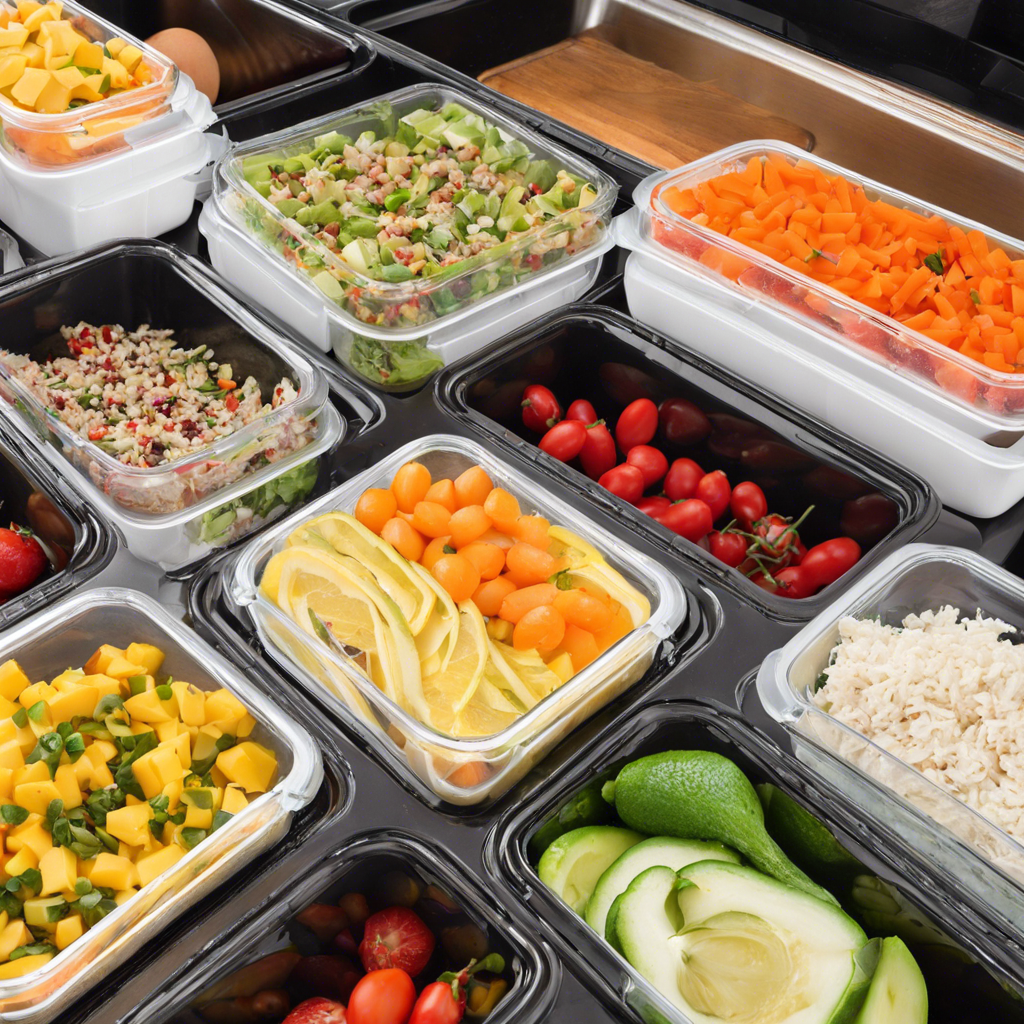Meal prep is an increasingly popular strategy for those wanting to save time and money, and it’s easy to see why. Planning your meals in advance and preparing them in bulk can significantly reduce your food expenses, and it also has the added benefit of helping you eat healthier and more consistently. It’s a win-win situation!
But how exactly does meal prep work, and how can it help you cut your food budget in half? Well, it’s all about buying ingredients in larger, more cost-effective quantities and then spending a dedicated block of time preparing and packaging these ingredients into ready-to-eat meals. This approach minimizes the amount of food that goes to waste and also reduces the temptation to opt for takeout or convenience foods, which tend to be more expensive and less nutritious.
One of the key benefits of meal prep is its flexibility. You can choose to prepare meals for the entire week ahead or simply focus on batch-cooking a few key components that can be mixed and matched to create a variety of dishes. For example, cooking a large batch of rice or quinoa can form the basis for several meals, and pre-chopping vegetables saves time and ensures they’re readily available when you need them.
Meal prep also encourages a more thoughtful approach to grocery shopping. By planning your meals in advance, you can make a detailed shopping list and stick to it, avoiding impulse purchases or unnecessary items that might end up going to waste. This alone can significantly reduce your food bill.
To get started with meal prep, invest in some good-quality storage containers and set aside a few hours each week to plan and prepare your meals. Look for recipes that freeze well and can be made in large batches, and don’t be afraid to experiment with new ingredients and flavors to keep things interesting.
Meal preparation has gained traction as a cost-saving and time-efficient strategy, and its advantages are twofold: it saves money and encourages healthier eating habits. Planning meals eliminates waste and deters people from opting for takeout, achieving a balanced approach to food consumption and expenses.
Additionally, meal prep is flexible, allowing individuals to prepare meals daily or batch-cook base ingredients to mix and match throughout the week. For instance, cooking grains or chopping vegetables in advance provides a foundation for diverse meals, saving time and money. This method also extends to thoughtful grocery shopping, as planning meals prompts a more conscious selection of items, reducing impulse purchases and unnecessary spending.
For those interested in embracing meal prep, investing in suitable storage containers is essential. Dedicating a few hours weekly to planning and preparing meals will become a routine that yields financial and health benefits. Look for freezable recipes, and don’t shy away from experimenting with flavors to maintain variety and enjoyment in your meals.
The benefits of meal prep are clear, and with a bit of organization and dedication, anyone can transform their food habits, reducing costs and improving nutrition. It might just be the magic ingredient your kitchen (and wallet) needs!
Start by setting aside a day and time that works best for you to plan and prepare your meals. Some people prefer to meal prep on Sundays to get ready for the workweek, while others may opt for weekdays. Choose a time when you have the energy and focus to dedicate a few hours to the kitchen.
Before your designated meal prep day, take inventory of what you already have in your pantry, fridge, and freezer. This will help you avoid buying duplicate items and ensure you use up ingredients before they spoil. Then, plan your meals for the week, considering the number of servings you’ll need and any dietary preferences or restrictions.
Make a detailed shopping list organized by category to ensure you don’t miss anything when you’re at the store. For example, group together fruits and vegetables, grains and cereals, proteins, dairy, and snacks. This will make navigating the grocery store easier and reduce the risk of impulse purchases.
When it’s time to cook, start with the ingredients that will take the longest to prepare or cook. If you’re batch-cooking proteins like chicken or ground beef, get those going first. While they’re cooking, you can chop vegetables, cook grains, or prepare other components.
To make the most of your time and effort, double (or triple!) recipes whenever possible, especially if you’re making something that freezes well, like soups, stews, or casseroles. That way, you’ll have ready-to-eat meals on hand for busier days or when you don’t feel like cooking.
Lastly, don’t forget to label and date your containers before storing them in the fridge or freezer. That way, you’ll know exactly what you’re grabbing when it’s time to eat, and you can keep track of how long your prepped meals last.
Happy meal prepping!

